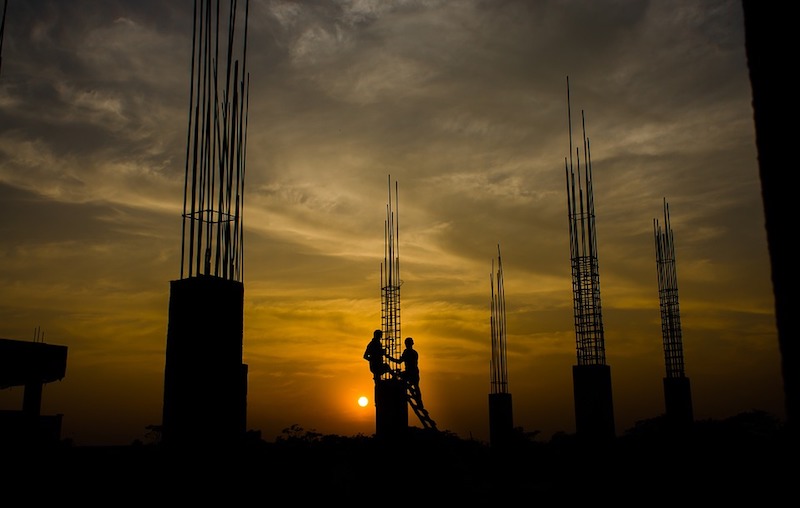Construction contractors remained confident during the second quarter of 2018, according to the latest Construction Confidence Index released today by Associated Builders and Contractors.
More than three in four construction firms expect that sales will continue to rise over the next six months, while three in five expect higher profit margins. More than seven in 10 expect to bolster staffing levels, though that proportion has fallen relative to the previous quarter, perhaps in part due to the skilled labor shortage in the United States. All three key components measured by the survey—sales, profit margins, and staffing levels—remain well above the diffusion index threshold of 50, signaling ongoing expansion in construction activity.
The survey found:
- CCI for sales expectations increased from 72.2 to 72.6 during the second quarter of 2018.
- CCI for profit margin expectations increased from 63.4 to 64.5.
- CCI for staffing levels decreased from 70.2 to 69.5 but remains elevated by historical standards.
“The U.S. economy remains steady, creating opportunities for general and subcontractors alike,” said ABC Chief Economist Anirban Basu. “Recently, infrastructure has been one of the primary drivers and, despite the absence of a federal infrastructure package, state and local governments have expanded their capital outlays. A number of states are also now running hefty budget surpluses, creating the capital and confidence necessary to drive public construction forward. As evidence, construction spending in the water supply category is up 29% on a year-over-year basis, conservation and development (e.g. flood control) by 24%, transportation by nearly 21%, public safety-related spending by 17%, and sewage and waste disposal by 11%.
“The confidence expressed by contractors is consistent with a number of other leading indicators, including the Architecture Billings Index and ABC’s Construction Backlog Indicator,” said Basu. “With financial markets surging, the nation producing a record number of available job openings, and both consumer and business confidence elevated, chances for a significant slowdown in nonresidential construction activity in late 2018 and into 2019 are remote. That helps explain why only about 6% of contractors expect sales to decline over the next six months.
“The longer-term outlook is not as clear,” said Basu. “Interest rates are rising, construction workers and materials have become more expensive and asset prices have become further elevated and therefore increasingly vulnerable to correction. There is also some evidence of overbuilding in certain real estate segments in some communities. Tariff increases and associated retaliation serve as yet another threat to longer-term economic momentum, as do faltering government pension funds. But for now, construction firms can expect to remain busy improving the nation’s built environment. A shortage of skilled workers remains the primary issue, which is expected to continue as more workers retire and insufficient workers join the skilled construction trades.”
CCI is a diffusion index. Readings above 50 indicate growth, while readings below 50 are unfavorable.
Related Stories
Healthcare Facilities | Feb 18, 2021
The Weekly show, Feb 18, 2021: What patients want from healthcare facilities, and Post-COVID retail trends
This week on The Weekly show, BD+C editors speak with AEC industry leaders from JLL and Landini Associates about what patients want from healthcare facilities, based on JLL's recent survey of 4,015 patients, and making online sales work for a retail sector recovery.
Market Data | Feb 17, 2021
Soaring prices and delivery delays for lumber and steel squeeze finances for construction firms already hit by pandemic
Association officials call for removing tariffs on key materials to provide immediate relief for hard-hit contractors and exploring ways to expand long-term capacity for steel, lumber and other materials,
Market Data | Feb 9, 2021
Construction Backlog and contractor optimism rise to start 2021, according to ABC member survey
Despite the monthly uptick, backlog is 0.9 months lower than in January 2020.
Market Data | Feb 9, 2021
USGBC top 10 states for LEED in 2020
The Top 10 States for LEED green building is based on gross square feet of certified space per person using 2010 U.S. Census data and includes commercial and institutional projects certified in 2020.
Market Data | Feb 8, 2021
Construction employment stalls in January with unemployment rate of 9.4%
New measures threaten to undermine recovery.
Market Data | Feb 4, 2021
Construction employment declined in 2020 in majority of metro areas
Houston-The Woodlands-Sugar Land and Brockton-Bridgewater-Easton, Mass. have worst 2020 losses, while Indianapolis-Carmel-Anderson, Ind. and Walla Walla, Wash. register largest gains in industry jobs.
Market Data | Feb 3, 2021
Construction spending diverges in December with slump in private nonresidential sector, mixed public work, and boom in homebuilding
Demand for nonresidential construction and public works will decline amid ongoing pandemic concerns.
Market Data | Feb 1, 2021
The New York City market is back on top and leads the U.S. hotel construction pipeline
New York City has the greatest number of projects under construction with 108 projects/19,439 rooms.
Market Data | Jan 29, 2021
Multifamily housing construction outlook soars in late 2020
Exceeds pre-COVID levels, reaching highest mark since 1st quarter 2018.
Market Data | Jan 29, 2021
The U.S. hotel construction pipeline stands at 5,216 projects/650,222 rooms at year-end 2020
At the end of Q4 ‘20, projects currently under construction stand at 1,487 projects/199,700 rooms.

















